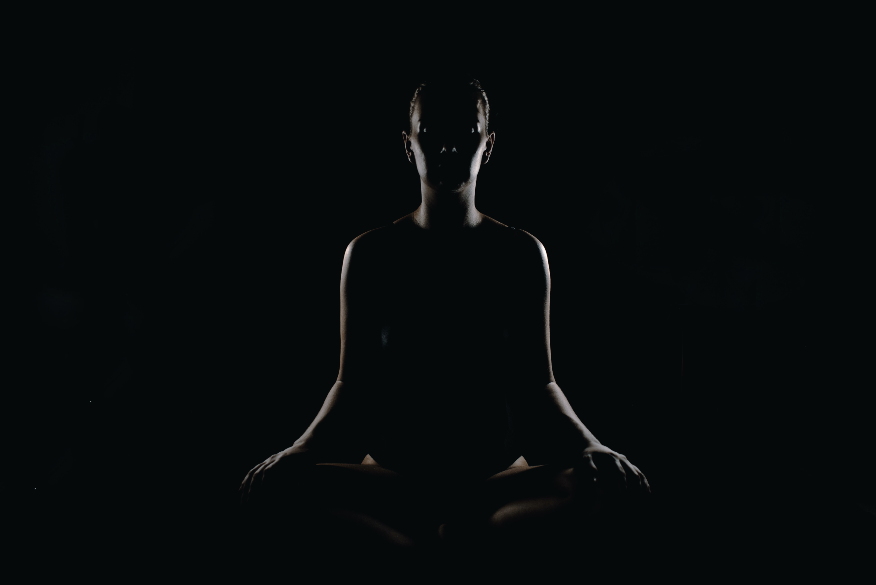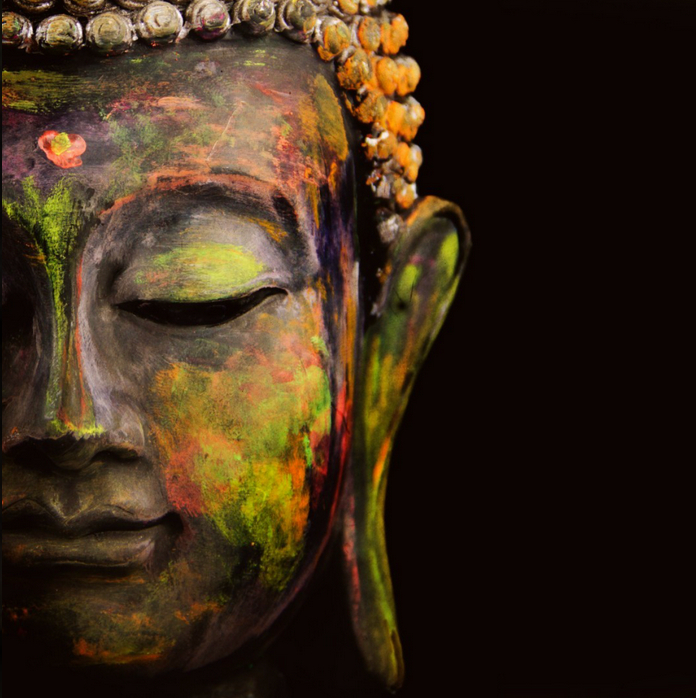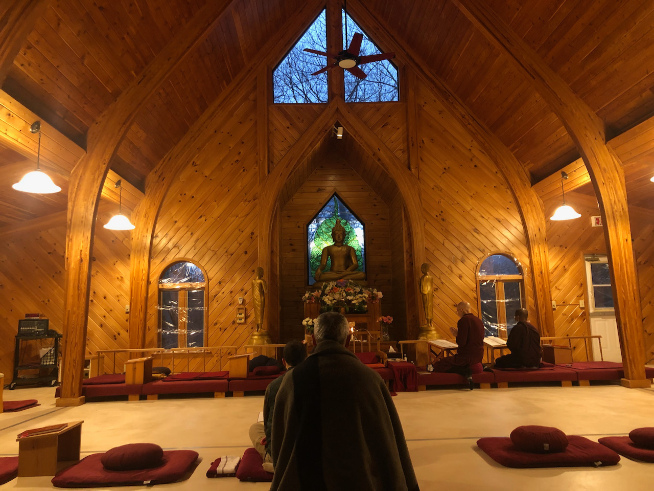
Meditation and mindfulness practice, on and off the cushion or chair, helps us put some space between ourselves and our reactions, breaking down our conditioned responses. Here’s how to tune into mindfulness throughout the day:
Set aside some time. You don’t need a meditation cushion or bench, or any sort of special equipment to access your mindfulness skills—but you do need to set aside some time and space.
Observe the present moment as it is. The aim of mindfulness is not quieting the mind, or attempting to achieve a state of eternal calm. The goal is simple: we’re aiming to pay attention to the present moment, without judgment. Easier said than done, we know.
Let your judgments roll by. When we notice judgments arise during our practice, we can make a mental note of them, and let them pass.
Return to observing the present moment as it is. Our minds often get carried away in thought. That’s why mindfulness is the practice of returning, again and again, to the present moment.
Be kind to your wandering mind. Don’t judge yourself for whatever thoughts crop up, just practice recognizing when your mind has wandered off, and gently bring it back.
That’s the practice. It’s often been said that it’s very simple, but it’s not necessarily easy. The work is to just keep doing it. Results will accrue.
Meditation Tips
This meditation focuses on the breath, not because there is anything special about it, but because the physical sensation of breathing is always there. You can use it as an anchor to the present moment. Throughout the practice you may find yourself caught up in thoughts, emotions, sounds—wherever your mind goes, simply come back again to the next breath. Even if you only come back once, that’s okay.
A Simple Meditation Practice
- Sit comfortably. Find a spot that gives you a stable, solid, comfortable seat.
- Notice what your legs are doing. If on a cushion, cross your legs comfortably in front of you. If on a chair, rest the bottoms of your feet on the floor.
- Straighten your upper body—but don’t stiffen. Your spine has natural curvature. Let it be there.
- Notice what your arms are doing. Situate your upper arms parallel to your upper body. Rest the palms of your hands on your legs wherever it feels most natural.
- Soften your gaze. Drop your chin a little and let your gaze fall gently downward. It’s not necessary to close your eyes. You can simply let what appears before your eyes be there without focusing on it.
- Feel your breath. Bring your attention to the physical sensation of breathing: the air moving through your nose or mouth, the rising and falling of your belly, or your chest.
- Notice when your mind wanders from your breath. Inevitably, your attention will leave the breath and wander to other places. Don’t worry. There’s no need to block or eliminate thinking. When you notice your mind wandering gently return your attention to the breath.
- Be kind about your wandering mind. You may find your mind wandering constantly—that’s normal, too. Instead of wrestling with your thoughts, practice observing them without reacting. Just sit and pay attention. As hard as it is to maintain, that’s all there is. Come back to your breath over and over again, without judgment or expectation.
- When you’re ready, gently lift your gaze (if your eyes are closed, open them). Take a moment and notice any sounds in the environment. Notice how your body feels right now. Notice your thoughts and emotions.
- SOURCE: Getting Started With Mindfulness
Anapanasati Meditation (mindfulness of the breath)

Anapanasati is a core meditation practice in the Buddha’s teaching, focusing on the inhalation and exhalation of the breath. There are 16 steps or instructions involved with deeply investigating the breath. This was one of the chief methods of meditation the Buddha likely practiced and taught throughout his 40 years of teaching. The 16 steps are divided into four sections or ‘tetrads.’
First Tetrad:
1.
Breathing in a long breath, one knows one is breathing in a long breath.
Breathing out a long breath, one knows one is breathing out a long breath.
2.
Breathing in a short breath, one knows one is breathing in a short breath.
Breathing out a short breath, one knows one is breathing out a short breath.
3.
Breathing in, one experiences the whole body.
Breathing out, one experiences the whole body.
4.
Breathing in, one relaxes the bodily formations.
Breathing out, one relaxes the bodily formations.
Second Tetrad:
5.
Breathing in, one experiences joy (or enjoyment).
Breathing out, one experiences joy (or enjoyment).
6.
Breathing in, one experiences pleasure (or well-being).
Breathing out, one experiences pleasure (or well-being).
7.
Breathing in, one experiences one’s mental formations.
Breathing out, one experiences one’s mental formations.
8.
Breathing in, one relaxes one’s mental formations.
Breathing out, one relaxes one’s mental formations.
Third Tetrad
9.
Breathing in, one experiences the mind.
Breathing out, one experiences the mind.
10.
Breathing in, one has satisfaction of mind.
Breathing out, one has satisfaction of mind.
11.
Breathing in, one composes the mind.
Breathing out, one composes the mind.
12.
Breathing in, one liberates the mind.
Breathing out, one liberates the mind.
Fourth Tetrad:
13.
Breathing in, one contemplates impermanence.
Breathing out, one contemplates impermanence.
14.
Breathing in, one contemplates fading away (of clinging).
Breathing out, one contemplates fading away (of clinging).
15.
Breathing in, one contemplates cessation (of clinging).
Breathing out, one contemplates cessation (of clinging).
16.
Breathing in, one contemplates relinquishment.
Breathing out, one contemplates relinquishment.
Further Study
If you wish to explore on your own the teachings on anapanasati, here are some suggestions:
- The Anapanasati Sutta: Mindfulness of Breathing: This is the sutta (Pali– ‘sutra’ in Sanskrit) in which the Buddha lays out his guidance on practicing this kind of meditation.
- Larry Rosenberg talks: Lay Buddhist teacher Larry Rosenberg (author of “Breath by Breath: The Liberating Practice of Insight Meditation”) says of his teaching approach: “The method I use most in teaching is anapanasati or mindfulness with breathing. Breath awareness supports us while we investigate the entire mind-body process. It helps calm the mind and gives us a graceful entry into a state of choiceless awareness–a place without agendas, where we are not for or against whatever turns up in the moment.” Here is a link to a page of audio files of his teachings at DharmaSeed.org. Click on the white bar that says ‘Select from Larry Rosenberg’s 308 Talks’ and find a host of them on anapanasati.
- Gil Fronsdal: Fronsdal is a leading lay Buddhist teacher and you can find his teachings on anapanasati practice at this link at AudioDharma.org.
Buddhist Meditation and Teachings in West Virginia

Those of you who have visited the Bhavana Society Therevadan Forest Monastery in High View, W.Va., the first Therevadan forest monastery in North America, know what a special place it is. Led by internationally known abbot and Buddhist scholar Bhante Gunaratana (known worldwide as ‘Bhante G’), Bhavana is a rich source of Buddhist teachings rooted in the Pali canon and the Buddha’s original teachings.
- BHANTE G ZOOM MEDITATION SESSIONS: Bhante G leads Buddhist meditations and talks 10 a.m. to 11 a.m. on most Saturdays and Sundays at the ZOOM link below. Type in the password ‘metta’ (a Pali word that signifies ‘loving-kindness or loving-friendliness’). On Saturday, the half-hour guided meditation is followed by a talk on Buddhist teachings. On Sundays, people in the session can ask questions on spiritual practice directly of Bhante G. LOG-IN ZOOM SITE: Log into the meeting at this link a few minutes before 10 a.m. on most Saturdays and Sundays. PASSWORD: metta
- BHAVANA RETREAT SIGN-UP PAGE: Note: Retreats open for sign-up 30 days in advance of the first day. Register fast! They fill up quickly as people come to Bhavana from around the country and world: LINK: bhavanasociety.org/retreats-and-events/
- BHAVANA FACEBOOK PAGE: LINK: facebook.com/BhavanaSocietyWV/
- BHAVANA YOUTUBE PAGE: NOTE: This is an excellent resource of videos on meditation, mindfulness and Buddhist teachings for both adults and youth. LINK: youtube.com/channel/UCjUZp1wSbSNkxP7SspfCf5w
The Buddha’s Direct Teachings
We encourage Circle members and others to take a dip into the Buddha’s direct teachings on meditation instruction in the following suttas (the Pali pronunciation of the more familiar word to refer to the Buddha’s specific teachings: ‘sutra.’
- MN 10 Satipatthana Sutta: Establishing Mindfulness aka The Foundations of Mindfulness, The Frames of Reference.
- DN 22 Mahasatipatthana Sutta: Is approximately identical with a fuller description of the Four Noble Truths.
- MN 118 Anapanasati Sutta: Mindfulness of Breathing
Other Resources
BOOK: Mindfulness in Plain English”: This is a good starting place for beginning or restarting a meditation practice. This classic guide to meditation, by Bhante Gunaratana, abbot of the Bhavana Society, has been translated into more than 20 languages.
LISTEN | Guided Meditation | Part 2 | Bhante Sujato
Australian monk Bhante Sujato. of Santi Forest Monastery in Bundanoon, Sydney in Australia., can be heard at the above link on the practice of metta or loving-kindness meditation, as taught by a monk in Bangkok with whom Bhante Sujato has studied. In this guided meditation, he leads a 30-minute meditation on the basics of working with the attention as you first begin to sit.
LISTEN | Meditation Introduction | Part 1 | Bhante Sujato
Along the way of introducing this metta meditation practice, Bhante Sujato undertakes an illuminating survey of the different kinds and methods of Buddhist meditation. The talk heard here is a shortened version taken from a rains retreat — the talk is edited down a bit. Seek out this and other talks by this very interesting Western monk who trained with Ajahn Brahm.
Loving-kindness Meditation
‘Metta’ or ‘loving-kindness’ can be a wonderful focus to meditation and mindfulness.
May I be well, happy and peaceful. May no harm come to me, may difficulties not last long, may I have a calm, centered mind. May I have patience, insight, courage and compassion in meeting and overcoming the inevitable challenges, difficulties and failures in life.
May my parents be well happy and peaceful. May no harm come to them, may difficulties not last long, may they have calm, centered minds. May they have patience, insight, courage and compassion in meeting and overcoming the inevitable challenges, difficulties and failures in life.
May my teachers be well happy and peaceful. May no harm come to them, may difficulties not last long, may they have calm, centered minds. May they have patience, insight, courage and compassion in meeting and overcoming the inevitable challenges, difficulties and failures in life.
May family members and relatives be well happy and peaceful. May no harm come to them, may difficulties not last long, may they have calm, centered minds. May they have patience, insight, courage and compassion in meeting and overcoming the inevitable challenges, difficulties and failures in life.
May friends and acquaintances be well happy and peaceful. May no harm come to them, may difficulties not last long, may they have calm, centered minds. May they have patience, insight, courage and compassion in meeting and overcoming the inevitable challenges, difficulties and failures in life.
May my enemies and those with whom I have trouble communicating be well happy and peaceful. May no harm come to them, may difficulties not last long, may they have calm, centered minds. May they have patience, insight, courage and compassion in meeting and overcoming the inevitable challenges, difficulties and failures in life.
May indifferent persons be well happy and peaceful. May no harm come to them, may difficulties not last long, may they have calm, centered minds. May they have patience, insight, courage and compassion in meeting and overcoming the inevitable challenges, difficulties and failures in life.
May all beings, with form and without form,visible and invisible, near and far, born or coming to birth, from the highest realms of existence to the lowest, be well happy and peaceful. May no harm come to them, may difficulties not last long, may they have calm, centered minds. May they have patience, insight, courage and compassion in meeting and overcoming the inevitable challenges, difficulties and failures in life.







Pingback: 800 Miles To Go Before I Sleep | WestVirginiaVille
Pingback: 800 Miles to go before I sleep – thestoryisthething
Greetings! My husband and I moved to Charleston in July. I have been teaching mindfulness meditation in Florida and while I was in the Air Force. I offer a weekly Zoom meditation class on Wednesdays at 10;00. If any of your members are interested, they can sign up at http://www.themindfulnesstree.life and I will provide the Zoom login information.
Dear Christine: My apologies, I missed seeing your comment. I just approved it. Sit on! Douglas, co-facilitator The Meditation Circle
Hi- I’m new to meditation and am hoping to join your circle if/when you start meeting again. I’ve looked high and low for the subscribe button on the website but can’t find it. Can you add me to the email list? Thank you!
Dear Jay: Good to hear from you. We had to take down the old subscription button because of technical issues. Bear with us as we set up a new subscription option. Be well. | Douglas
Hi, i am trying to sign up for your email list but I keep getting redirected. Can you add my email to the mailing list? Thanks.
Let me see if I can fix that! With metta, Douglas